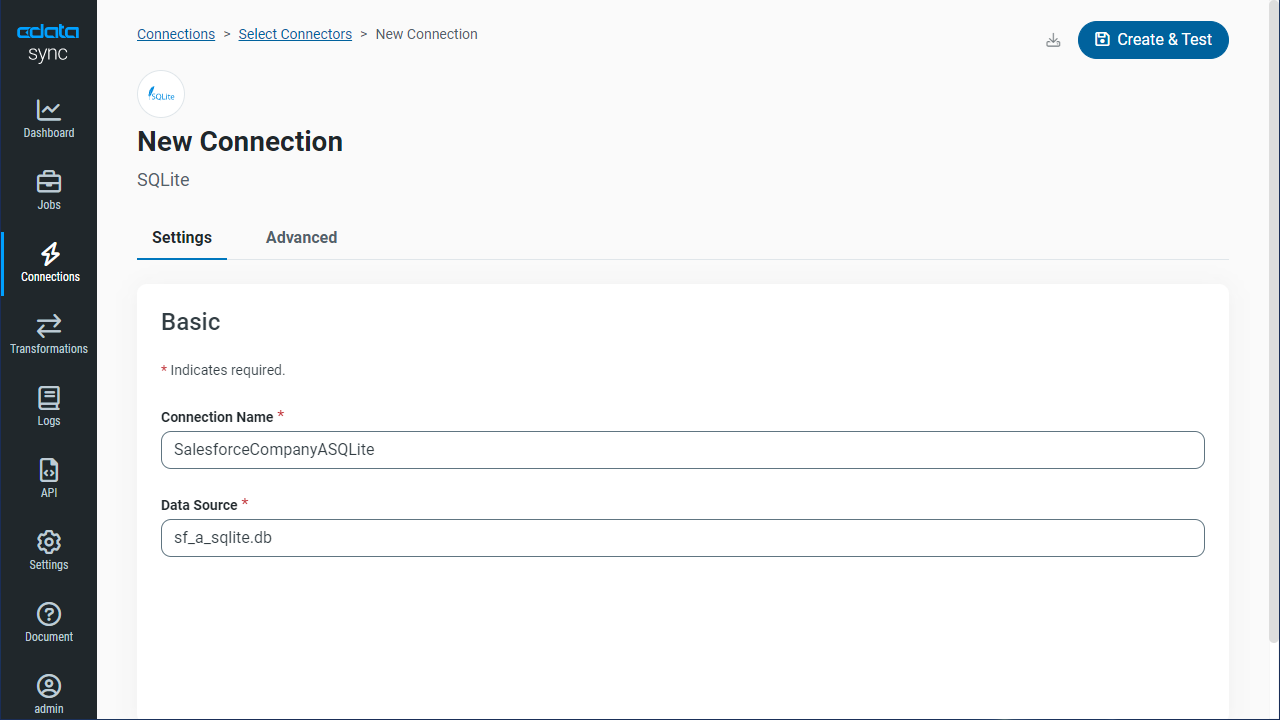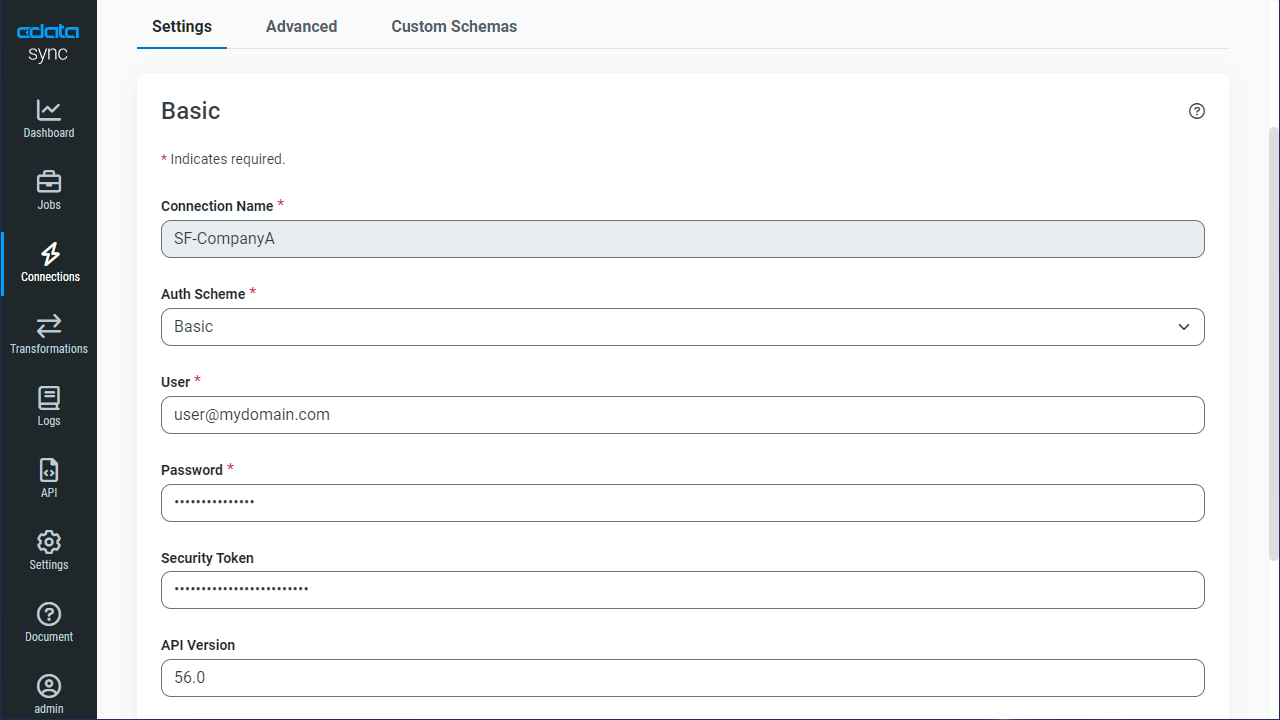Model Context Protocol (MCP) finally gives AI models a way to access the business data needed to make them really useful at work. CData MCP Servers have the depth and performance to make sure AI has access to all of the answers.
Try them now for free →Replicate Salesloft Data to Multiple Databases
Replicate Salesloft data to disparate databases with a point-and-click configuration.
Always-on applications rely on automatic failover capabilities and real-time access to data. CData Sync integrates live Salesloft data into your mirrored databases, always-on cloud databases, and other databases such as your reporting server: Automatically synchronize with remote Salesloft data from Windows.
Configure Replication Destinations
Using CData Sync, you can replicate Salesloft data to any number of databases, both cloud-based and on-premises. To add a replication destination, navigate to the Connections tab.
For each destination database:
- Click Add Connection.
- Select a destination. In this article, we use SQLite.
![Configure a Destination connection.]()
- Enter the necessary connection properties. To replicate Salesloft to a SQLite database, enter a file path in the Data Source box.
- Click Test Connection to ensure that the connection is configured properly.
![Configure a Destination connection (SQLite is shown).]()
- Click Save Changes.
Configure the Salesloft Connection
You can configure a connection to Salesloft from the Connections tab. To add a connection to your Salesloft account, navigate to the Connections tab.
- Click Add Connection.
- Select a source (Salesloft).
- Configure the connection properties.
SalesLoft authenticates using the OAuth authentication standard or an API Key. OAuth requires the authenticating user to interact with SalesLoft using the browser.Using OAuth
For OAuth authentication, create an OAuth app to obtain the OAuthClientId, OAuthClientSecret, and CallbackURL connection properties. See the OAuth section in the Help documentation for an authentication guide.Using APIKey
Alternatively, you can authenticate with an APIKey. Provision an API key from the SalesLoft user interface: https://accounts.salesloft.com/oauth/applications/. You will receive a Key which will be used when issuing requests.
![Configure a Source connection (Salesforce is shown).]()
- Click Connect to ensure that the connection is configured properly.
- Click Save Changes.
Configure Replication Queries
CData Sync enables you to control replication with a point-and-click interface and with SQL queries. For each replication you wish to configure, navigate to the Jobs tab and click Add Job. Select the Source and Destination for your replication.
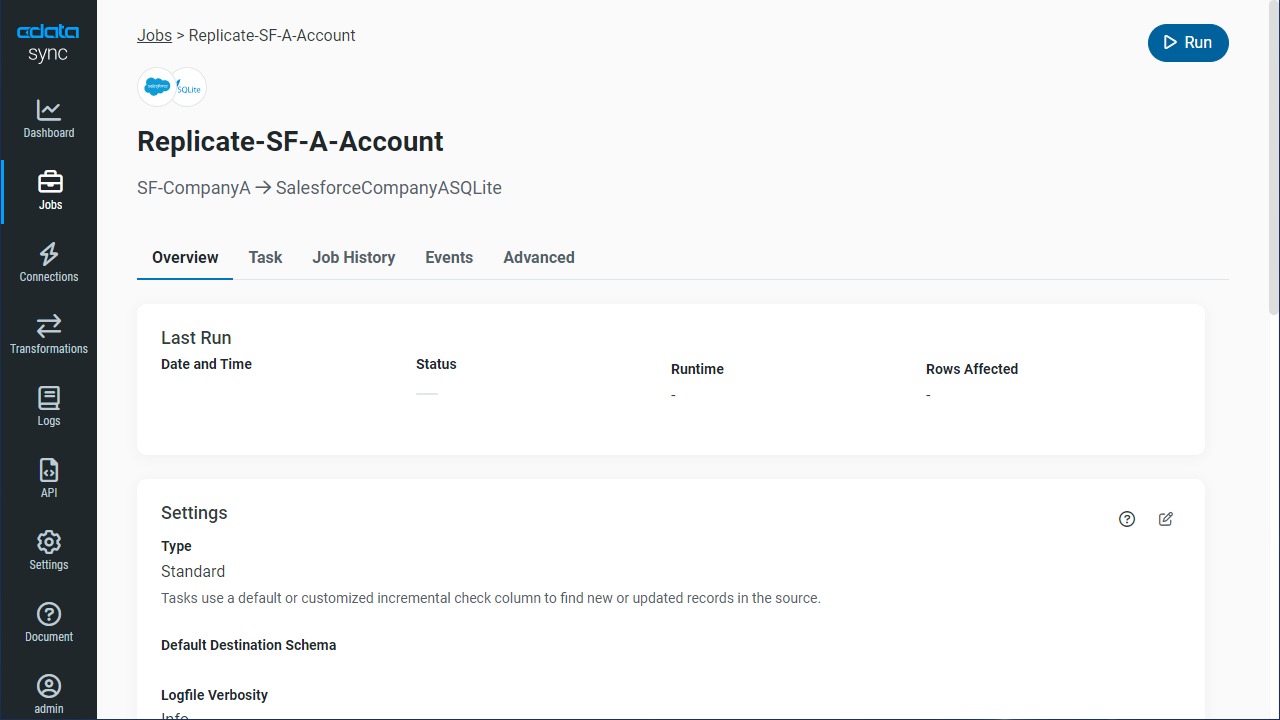
Replicate Entire Tables
To replicate an entire table, click Add Tables in the Tables section, choose the table(s) you wish to replicate, and click Add Selected Tables.
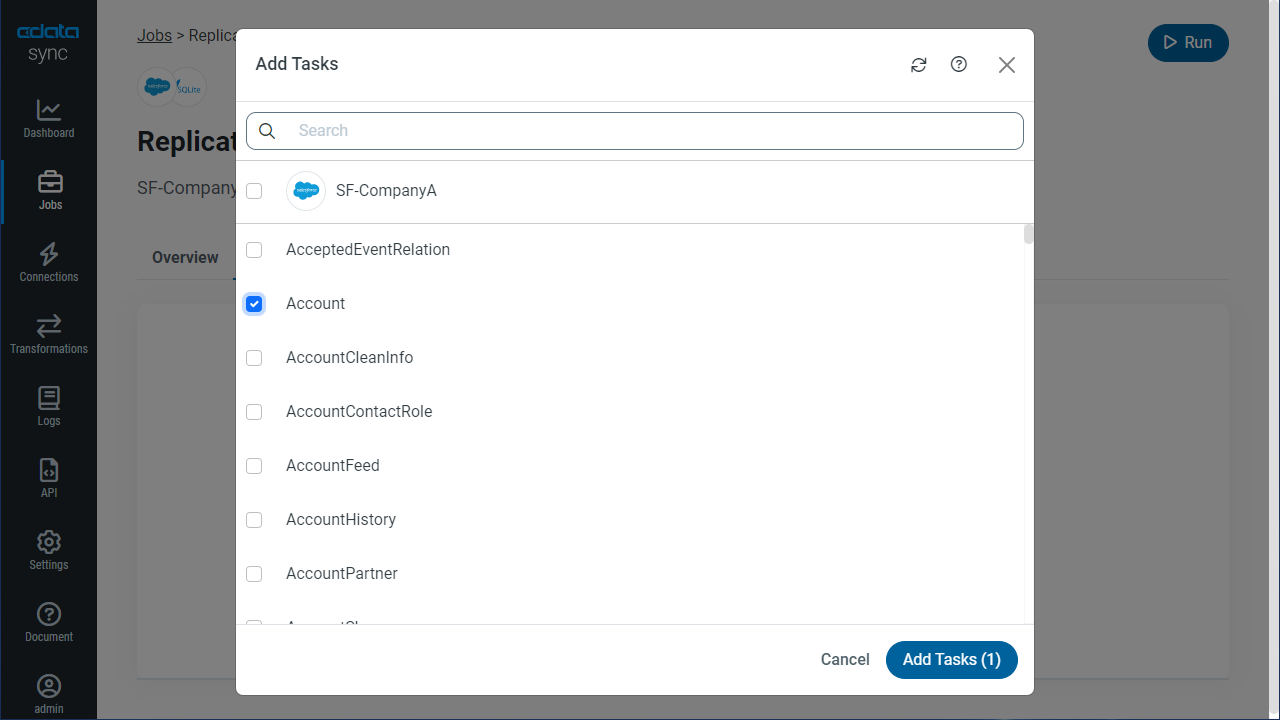
Customize Your Replication
You can use a SQL query to customize your replication. The REPLICATE statement is a high-level command that caches and maintains a table in your database. You can define any SELECT query supported by the Salesloft API. To customize your replication, click Add Custom Query in the Tables section and define the Query Statement.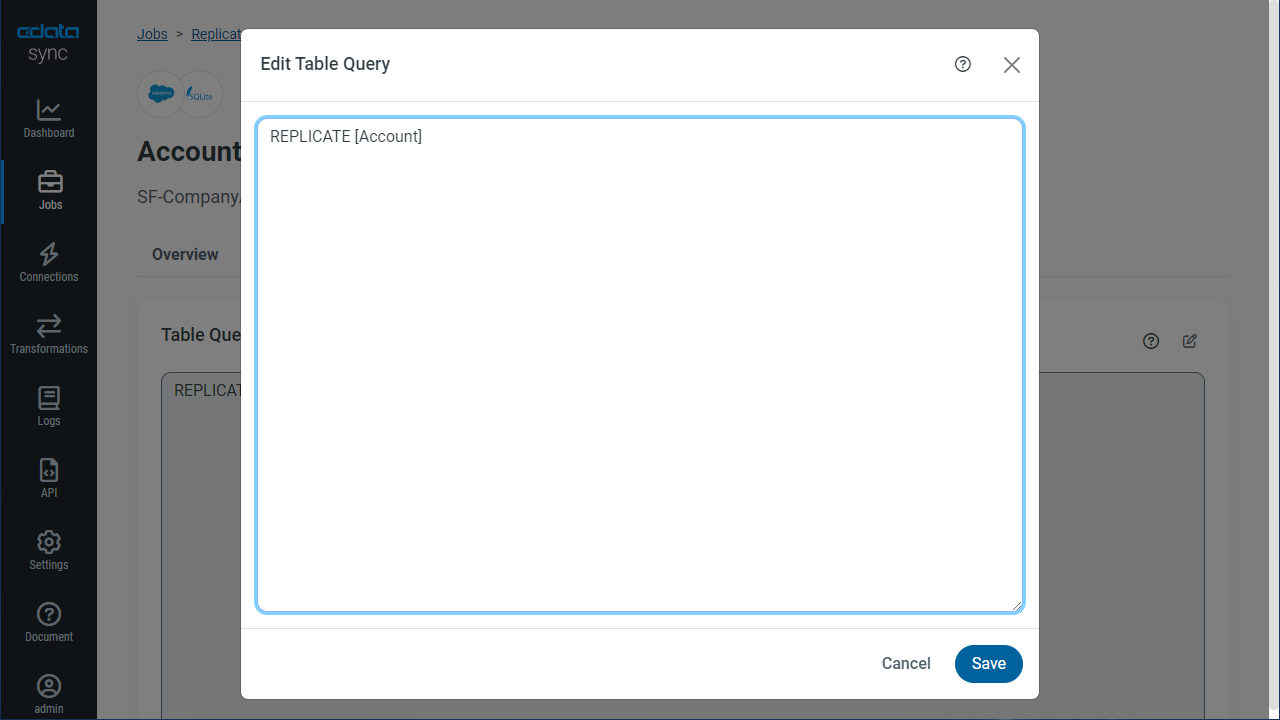
The statement below caches and incrementally updates a table of Salesloft data:
REPLICATE Accounts;
You can specify a file containing the replication queries you want to use to update a particular database. Separate replication statements with semicolons. The following options are useful if you are replicating multiple Salesloft accounts into the same database:
-
Use a different table prefix in the REPLICATE SELECT statement:
REPLICATE PROD_Accounts SELECT * FROM Accounts; -
Alternatively, use a different schema:
REPLICATE PROD.Accounts SELECT * FROM Accounts;
Schedule Your Replication
In the Schedule section, you can schedule a job to run automatically, configuring the job to run after specified intervals ranging from once every 10 minutes to once every month.
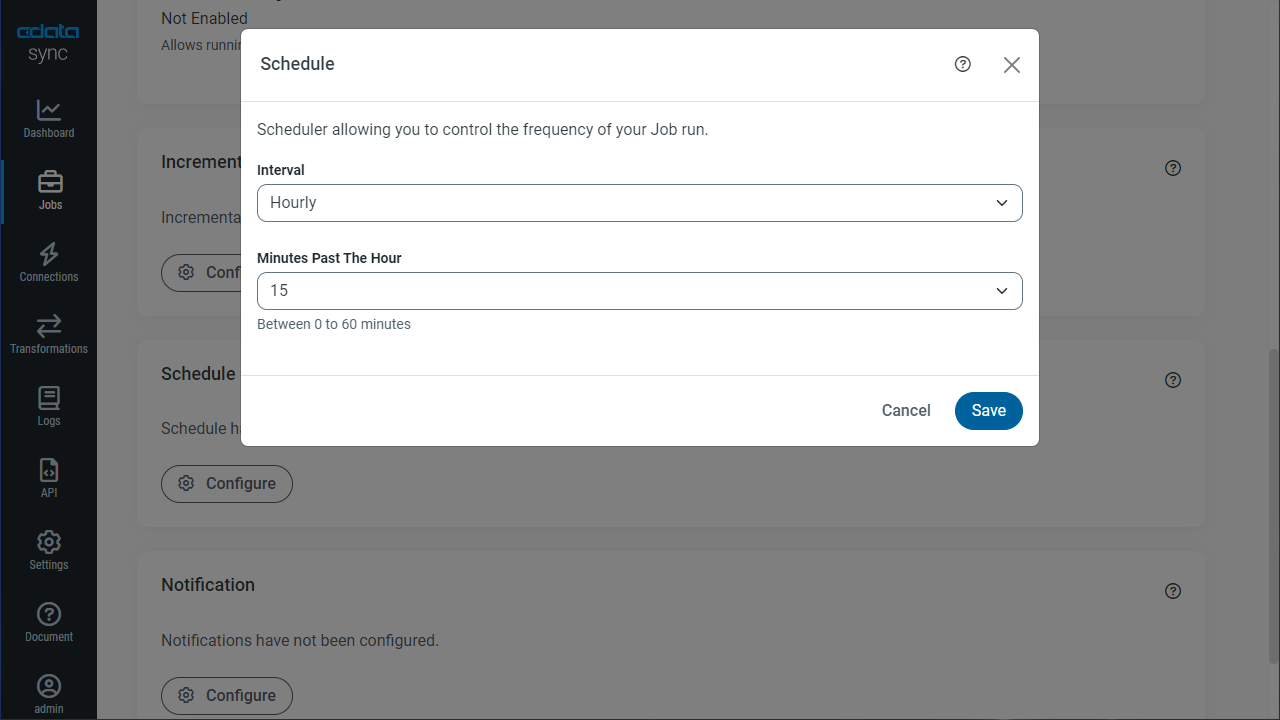
Once you have configured the replication job, click Save Changes. You can configure any number of jobs to manage the replication of your Salesloft data to disparate on-premises, cloud-based, and other databases.


